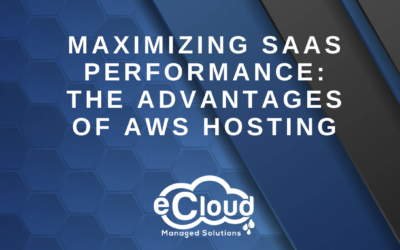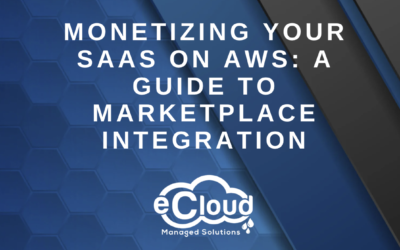Cybersecurity storms with a chance for cloud security assessments to provide assurance and peace of mind.
The Aftermath of the Cloud Security Storm
The Cloud Security storm back in the beginning of May left a lot of people wondering what could be done to help prevent another chaotic event like this from happening.
The Colonial Pipeline incident was a wakeup call for the importance of reliable data and cloud security. The White House issued an Executive Order that addressed many facets of what secure cloud information will look like moving forward. In addition to creating a Cybersecurity Safety Review Board, the federal government is planning on modernizing and implementing stronger cybersecurity standards. One of these standards is a “zero-trust architecture” which would involve a push to move to secure cloud services and implementing tools like multifactor authentication and encryption. While the government is controlling their side of things, they are hoping that many members of the private sector will follow suit to hopefully decrease the likelihood of these attacks happening again.

In order to help the private sector separate cloud companies from one another, AWS now has an ATO distinction, or Authority to Operate, and eCloud Managed Solutions has obtained that distinction! The ATO on AWS Program includes training in the AWS Security Automation and Orchestration (SAO) methodology and builds and optimizes DevOps, SecOps, Continuous Integration/Continuous Delivery (CI/CD), and continuous risk treatment (CRT) strategies. Given that security within the cloud is a concern for many customers, eCloud wants to make sure that we have the most updated training and the most updated certifications!
Sources: White House
New Convergence Zone Forming: Deloitte and Teradata join forces
Things are heating up as Deloitte and Teradata join together to create some interesting weather patterns.
In early June, Deloitte and Teradata teamed up to help their mutual customers move their data out of their on-premise data management and into the cloud. This partnership will help organizations make their migration process simpler and make sure that these organizations are equipped with everything the cloud has to offer. 
As Ashish Verma, the managing director of Deloitte Consulting and Data and Analytics Modernization lead said, “The future of enterprise business requires enhanced speed, agility and innovation which is central to the capabilities of a cloud data analytics platform..”. The cloud is the way of the future and allows organizations to be more efficient, cost effective, and so much more.
Sources: Cloud Computing News
Got your head in the Cloud?
Have you been daydreaming of what cloud migration could look like for you and your company? The easiest first step is to start with an assessment. 
To help us help you figure out where you are on your cloud journey and what path to take with you, a cloud readiness assessment is a great place to start! While every company and migration is different, there are five general steps that major cloud providers use:
- Identify the scope and business cases for migration
- This step is all about discovering why you want to move to the cloud in the first place, and how much you want to move to the cloud. Some of the main business cases for migration are cost reduction, scaling resources to make them more efficient, and improved disaster recovery and backup services. Once moving the cloud makes sense for your company, it’s time to move on to the next step!
- Evaluate available in-house resources
- Since the cloud is new to many, it is important to know where gaps might be in employee knowledge of the cloud or if there are sufficient funds needed for the migration. Some organizations find it helpful to bring in a cloud migration expert to make sure everyone is on the same page and can clear up any confusion from the people who will be discussing the cloud moving forward.
- Assess infrastructure requirements
- This step gets into the nitty gritty of the IT infrastructure and what components make sense to move, keep the same, or get rid of entirely. When doing cloud migration, it is also a great opportunity to look at the organization as a whole and make sure every component is working as efficiently as possible. If something is not working, now is the time to change it!
- Assess security requirements
- Security is very important for anyone looking to move to the cloud. Different governments or industry standards could impact what an organization’s security structure could look like. In this step, it is important to know where all of your data is, who has access to it, and who needs access to it moving forward. Some popular security measures that organizations will take within the cloud include: multi-factor authentication, encryption, identity and access management, and web application firewalls.
- Determine timeline and budget
- Making sure everyone is on the same page with the timeline is very helpful and it helps to keep the project on track. Determining a budget for a cloud migration project can include the total cost of ownership calculations, the labor involved in migration, licensing costs, and migration training, among other things.
With these steps completed, it should become evident what parts of an organization’s compute could benefit from moving to the cloud, what components (if any) should remain out of the cloud, who will need to be educated on this migration, and how this data will stay safe.
SOURCE: SDX CENTRAL
FATHERS DAY FUN! 
We want to wish everyone a Happy Father’s Day coming up this Sunday on the 20th! This will be 111th Father’s Day, as the first one was celebrated on June 19th, 1910. Father’s Day was started by Sonora Smart Dodd who wanted to honor her father, who was a Civil War veteran and a single dad who raised all six of his children. She got the idea when she was listening to a Mother’s Day sermon and thought to start celebrating the holiday in her father’s birthday month of June. As a proud father of three, we hope all the dads out there feel very celebrated this upcoming Sunday!
Author: Eric Sanders, Managing Partner

________________________________________________________________________




